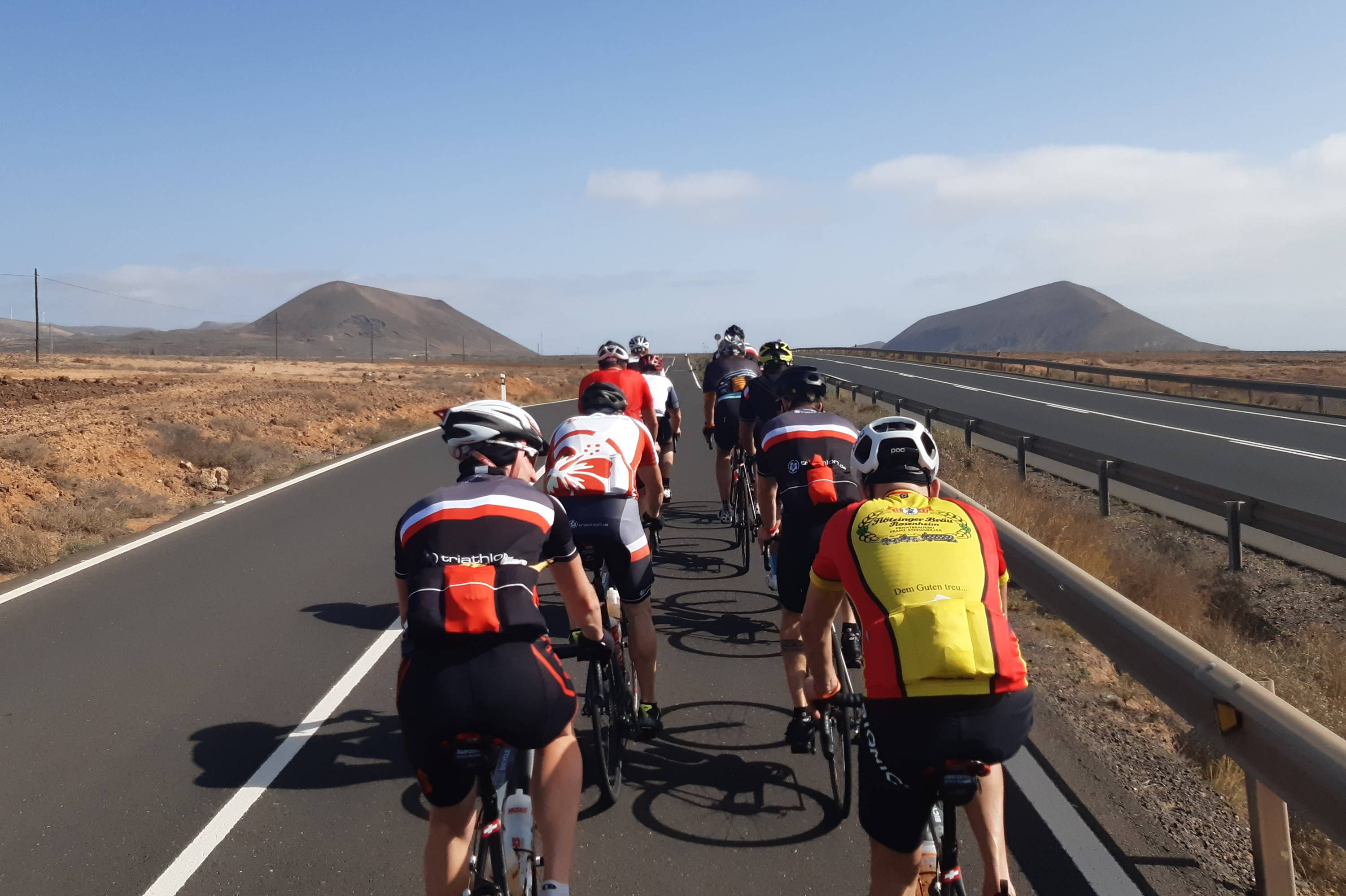Triathleten sind Einzelkämpfer. Nicht nur im Rennen fahren sie auf sich alleine gestellt. Auch ihre Trainingskilometer absolvieren sie häufig für sich. An das Fahren in der Gruppe sind sie meist nicht gewöhnt. Ein nicht ganz ungefährlicher Faktor, wenn es dann doch einmal im Pulk auf die Straße geht. Wir haben die wichtigsten Verhaltensregeln für euch.
Die Zweierreihe
Die Zweierreihe ist die Standardformation als Gruppe von Radfahrern. Mit der Novelle der StVO aus dem Jahr 2020 ist das Nebeneinanderfahren nun grundsätzlich erlaubt! Hier gilt: sofern anderer Verkehr nicht behindert wird, darf man auf dem Rad generell zu zweit nebeneinander fahren - ungbhängig von der Anzahl der Radfahrer. Die Gruppe sollte sich nicht unnötig in die Länge ziehen, sondern im Verkehr als geschlossener Verband auftreten. Hier sollten also keine größeren Lücken zwischen den Reihen entstehen. Der Abstand zum Vordermann und zum seitlichen Nachbarn ist also relativ gering, was Fahrkönnen und Fahrdisziplin von allen Teilnehmern der Gruppe erfordert. Um die Sicherheit und das flüssige Rollen der Gruppe zu gewährleisten, gibt es daher festgelegte Regeln:
Das Anzeigen
In einer größeren Gruppe sehen die Hinterherfahrenden Hindernisse nicht, oder erst sehr spät. Deshalb zeigen die Fahrer der ersten Reihe Richtungswechsel, Hindernisse oder Gefahrenstellen durch Handzeichen frühzeitig an. Diese Zeichen werden Reihe für Reihe nach hinten weitergegeben, sodass auch der Letzte dem Loch im Asphalt noch ausweichen kann.
Das Tempo und die Führungswechsel
In einer Gruppe sollte auf ein gleichmäßiges Tempo geachtet werden. Schließlich möchten auch alle Mitglieder der Trainingsgruppe gemeinsam Zuhause ankommen. Damit jeder Fahrer einmal vom großen Windschatten der Gruppe profitieren kann, sollte in regelmäßigen Abständen Führungswechsel durchgeführt werden. Dazu geben die Fahrer in der ersten Reihe ein vorher vereinbartes Zeichen zum Wechsel. Nach gründlicher Versicherung, dass weder von vorne, noch von hinten Verkehr naht, scheren die Führenden an einer übersichtlichen Stelle im Straßenverlauf nach links und rechts aus und nehmen Tempo aus ihrer Fahrt. Die restliche Gruppe fährt daraufhin, ohne das Tempo zu ändern, zwischen den beiden hindurch. Dann können sich die beiden ehemals Führenden an letzter Position wieder einreihen.
Der Abstand zwischen den Fahrern
Besonders, wenn das Fahren in der Gruppe ungewohnt ist, fällt es schwer den richtigen Abstand zu seinem Vordermann einzuschätzen. Ein zu großer Abstand ist für das zusammen Fahren im Gruppenverband ungünstig. Ein zu kleiner Abstand birgt die Gefahr eines Unfalls durch Auffahren. Grundsätzlich sollte in der Gruppe hoch konzentriert gefahren werden. Das ist anstrengend und sollte zunächst auf kürzeren Ausfahrten eingeübt werden.
Am besten lässt sich der Abstand zum Vordermann abschätzen, wenn man seinen Rücken fixiert. Schaut man auf sein Hinterrad, muss das Auge die ständige Bewegung verarbeiten. Das ist anstrengend und führt schnell zur Ermüdung. Mit dem Blick auf den Rücken des Vordermanns hat man zudem alles Wichtige im peripheren Sichtfeld – von der Straßenumgebung bis zu den Bremsen des Vordermanns – und kann im Ernstfall schnell reagieren.
Ganz allgemein
Im Gruppenverband sind die Hände stets an den Bremsen. Ein Fahren in Aeroposition oder am Oberlenker ist absolut tabu! Wer unterwegs zum Riegel greifen möchte, der reiht sich am besten ganz hinten ein. Dort kann er sich in Ruhe stärken und gefährdet die Mitfahrer nicht.
Zum guten Ton und eigentlich selbstverständlich, gehört, dass natürlich alle Teilnehmer der Radausfahrt mit Helm unterwegs sind, die Straßenverkehrsordnung stets beachten und anderen Verkehrsteilnehmern rücksichtsvoll begegnen.
Das Fahren in der Gruppe erfordert etwas Übung und Routine. Mit einem eingespielten Team macht das Radtraining dann jedoch doppelt Spaß.




















